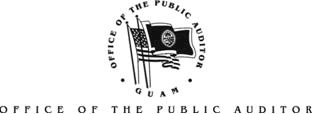
GTA FY 2002 Financial
Highlights
May 6, 2004
The financial statements of the Guam Telephone Authority for fiscal year ending September 30, 2002 as audited by Ernst & Young LLP was issued approximately 10 months after the due date of June 30, 2003.
As per the Rural Telephone Bank (RTB) Supplemental Indenture, GTA is required to maintain an average Times Income Earned Ratio (TIER) of 1.5. TIER is calculated by taking the sum of GTA’s Net Income and Interest Expense and dividing it by the Interest Expense. Maintaining a 1.5 average TIER suggests that GTA has sufficient working capital. GTA’s actual TIER for FY 2002 was .22, however, GTA’s average TIER was 1.14. GTA still failed to meet the minimum requirement of an averaged TIER of 1.5, which may place GTA in technical default of its debt covenants with Rural Telephone Bank.
The failure to meet the TIER is partly attributed to a $6.163 million prior period adjustment that the auditors required for the FY 2002 financial statements. The adjustment is pursuant to a recording conflict involving the RTB Stocks investments. The previous auditor allowed the stocks to be recorded at market value in prior periods. The current auditor disagrees with this and believes that the stocks should be recorded at cost. To bring the RTB stocks back to cost, a prior period adjustment of $6.163 million was necessary. The OPA concurred that the RTB stocks should be recorded at cost.
GTA showed an overall improvement in operations with a $4 million net decrease in operating expenses for FY 2002. Expenses decreased by $5.5 million, but this was offset by a $1.5 million increase in depreciation expense. The decrease in operating expenses can be attributed to the following:
• Decrease of $1 million in Plant specific expenses, which includes materials and supplies, telephone, leased facilities, overtime, and tools and equipment expenses.
• Decrease of $2.5 million in product implementation, price and cost studies, and telephone service costs.
• Decrease of $.5 million in telephone, legal fees, and training expenses.
• Decrease of $.5 million in plant non-specific miscellaneous expenses.
• Decrease of $1 million in privatization costs.
GTA’s privatization expense for FY 2002 amounted to $3 million. This is in addition to the privatization expense incurred in FY 2001, which would bring the amount spent on privatization to $7.1 million.
Despite the overall decrease in expenses, GTA still incurred a net loss of $5 million in FY 2002. In the prior year, GTA recognized a gain of $3 million due to an $11.8 million forgiveness of unfunded liability to the Retirement Fund; a one time benefit that GTA received. Were it not for the forgiveness of this $11.8 million obligation, GTA would have had an $8.2 million in loss in FY 2001. Therefore, GTA’s $5 million loss in FY 2002 is still an improvement from FY 2001.
In FY 2002, the auditor cited 50 findings for GTA compared to nine findings in FY 2001. Findings included areas such as receivables, inventory, and procurement. There were 11 findings on procurement alone and they include the following:
• Lack of procurement documentation in files;
• Non-compliance with procurement regulations (emergency procurement, competitive sealed bids, and request for proposals);
• General weak internal controls concerning sole source procurement; and
• Open purchase orders that have remained outstanding for more than two years.
One particular finding involved an emergency procurement with a vendor
amounting to over $2 million. According to the finding, this contract
should have been completed within 30 days pursuant to regulations governing
emergency procurement. Additionally, emergency procurement is designed
to cover only goods and supplies. The procurement, however, appeared
to involve construction as well as professional services. Capital improvement
is not allowed under emergency procurement. Moreover, research found
that the vendor did not appear to have a valid business license, while
the vendor was doing business with GTA. The nature of the professional
services involved engineering and neither the vendor nor his sub-contractor
was a duly licensed engineer by the Guam PEALS Board.
The procurement cost amounted to $2 million due to additional work
performed by subcontractors. A legal opinion from GTA legal counsel
in November 2003, indicated that GTA was not legally obligated to assume
the incidental costs of subcontracted work.